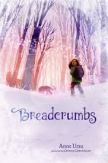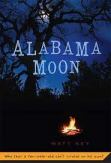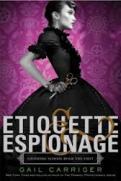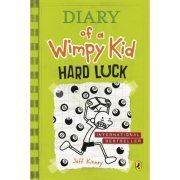 This past weekend, I attended the Los Angeles Times Festival of Books, which is held on the campus of the University of Southern California. It is a free weekend event which I highly recommend if you live nearby. There are all sorts of booksellers, in all sorts of categories, plus many other bookish things to discover and purchase, like posters, tote bags, journals, and nerdy t-shirts. All throughout the weekend, authors are giving talks, doing book signings, or teaching cooking classes, and there are people reading poetry, performing live music, puppet show-ing, and goodness knows what else! Some of the author panels, or “conversations,” require a $1 ticket to reserve a seat, but otherwise you are free to walk around and attend whatever catches your eye.
This past weekend, I attended the Los Angeles Times Festival of Books, which is held on the campus of the University of Southern California. It is a free weekend event which I highly recommend if you live nearby. There are all sorts of booksellers, in all sorts of categories, plus many other bookish things to discover and purchase, like posters, tote bags, journals, and nerdy t-shirts. All throughout the weekend, authors are giving talks, doing book signings, or teaching cooking classes, and there are people reading poetry, performing live music, puppet show-ing, and goodness knows what else! Some of the author panels, or “conversations,” require a $1 ticket to reserve a seat, but otherwise you are free to walk around and attend whatever catches your eye.
I attended two author conversations that were both very popular– John Green (The Fault in Our Stars, and several other titles, but he’s more of a 8th grade-and-up author), and Daniel Handler (aka Lemony Snicket.) I saw Daniel Handler do a reading last year, but this time it was just him talking about how he got into writing and the surprising success of A Series of Unfortunate Events, and his new series, All the Wrong Questions. His panel was moderated by Ransom Riggs, author of Miss Peregrine’s Home for Peculiar Children, another book I quite enjoyed reading, and together they made a great interview team. I met them both afterward to get my books signed. (Authors are my celebrities, what can I say? It’s all very exciting!)
This particular book takes place in the All the Wrong Questions world of Stain’d-by-the Sea, a town that once had a thriving ink industry until the sea dried up and the octopi that produced the ink disappeared. The town is now practically abandoned, except for a few locals who still live there. A young Lemony Snicket is stationed here with his mentor, but since she is pointless and no help at all, he begins working on some mysteries on the side.
Here we have 13 short mysteries to solve alongside Lemony Snicket. You can put your own detective skills to work as you read each story and then flip to the back of the book to see if you were right. This is in the style of the Encyclopedia Brown books I read when I was a kid, in which the neighborhood boy detective solved disputes by using his keen powers of observation, with the answers located separately in the back. (One of the character names actually refers to the Encyclopedia Brown creator, Donald Sobol!) In addition, watch for references to books that are mentioned, but never named. I figured one out this morning as I was sitting down to blog, as a matter of fact.
These are fun to share and I started reading aloud as soon as we got into the car to drive home. This book is also important because it tells us about some of the other people who live in Stain’d-by-the-Sea, which is interesting since we have only met a few residents in the other books so far. Will these people play a part in the larger mystery that Snicket is working on? We will have to wait and see!
HINT: Read the stories. Read the solutions. Then read the solutions again. I’m just sayin’.









